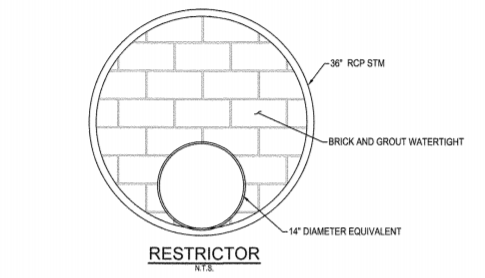I have been assigned to design a restrictor wall inside an existing RCP.
Here is an example image of the task I have been given:

I am seeking some guidance about how to tackle this assignment. I have never preformed structural designs for brick.
I imagine that I need to design the brick to resist the hydro static loads acting on it when water is flowing through the pipe. Are there any design examples to for this situation?
Suggestions/comments are appreciated.
Here is an example image of the task I have been given:

I am seeking some guidance about how to tackle this assignment. I have never preformed structural designs for brick.
I imagine that I need to design the brick to resist the hydro static loads acting on it when water is flowing through the pipe. Are there any design examples to for this situation?
Suggestions/comments are appreciated.

![[smile] [smile] [smile]](/data/assets/smilies/smile.gif)